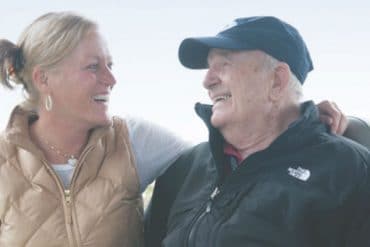 In December 1987, I stood on the corner of 17th and Pennsylvania, a block from the White House, and jumped and applauded like mad for the man being driven by. He had changed the world, altered everything I had grown up believing the world would come to. Because of him there wasn’t going to be a World War III, unleashing the nuclear hell my generation had seen coming since first grade.
In December 1987, I stood on the corner of 17th and Pennsylvania, a block from the White House, and jumped and applauded like mad for the man being driven by. He had changed the world, altered everything I had grown up believing the world would come to. Because of him there wasn’t going to be a World War III, unleashing the nuclear hell my generation had seen coming since first grade.
His name was Mikhail Gorbachev. He was the young new leader of the Soviet Union and his meetings with President Ronald Reagan had changed the course of history. The two countries were no longer headed to- ward an inevitable clash that would destroy everything.
For those of my generation, those born during and just after World War II, the earliest boomers, the school days of the early 1950s featured two periodic drills. One was for fires. That was when we got into lines and moved two-by-two out of the building and onto the asphalt recess yard.
The other, far more horrific, was the “air raid” drill. In this exercise, we were instructed by Sister to get under our little wooden desks, then crouch there without a sound. We were told to use this time to prepare for the real thing. It would take fifteen minutes—though even Sister admitted no one knew for sure—for the giant flash of light that would signal the onslaught of nuclear weapons, with them the end of the world and the coming of the General Judgment.
All of this instruction involving current events, public safety and religion came to us as a piece. It was nothing to laugh about—though I did, even back then, raise the prospect that the good Sisters might someday get the two drills mixed up, sending us under our desks to face the fire and out onto the recess yard to welcome the incoming.
But the fact is, hard for the younger generations to believe, we took this all with dead seriousness, just as the US government itself did. I bring to your attention the National Security Council Report of April 14, 1950. Kept “top secret” for a quarter century, NSC 68 is the official version of what the Sisters of Mercy were telling us at St. Christopher School in northeast Philadelphia: “The Soviet Union … is animated by a new fanatic faith, antithetical to our own, and seeks to impose its absolute authority over the rest of the world. With the development of increasingly terrifying weapons of mass destruction, every individual faces the ever-pre- sent possibility of annihilation should the conflict enter the phase of total war. The issues that face us are momentous, involving the fulfillment or destruction not only of this Republic but of civilization itself.”
Fifteen minutes and then a flash of light.
It’s hard to measure the impact of that information on the young mind. Yet the specter of nuclear war with the “Russians” was not only the cosmic reality we were taught in school but, let’s face it, the box our heads arrived in. We knew no other world. We’d had two world wars; it was just a matter of time before we had the third, the big one and the last, the last of everything.
The hard thing to imagine growing up in the 1950s was how a WWIII could be avoided. The Russians had gotten China in ’49, then a good part of Indo-China in 1954. They had cracked down on Hungary in ’56 and gotten Cuba three years later. By the early sixties they were making inroads in North Africa and had admirers throughout the “Third World.” They were backing “wars of liberation” around the globe, including the fight for South Vietnam. When would the time arrive when we’d have to fight for America itself? Every American president, from Kennedy to Reagan, sweated the possibility that he would have to “push the button,” choosing nuclear war over capitulation.
All this changed with the arrival of Mikhail Gorbachev. From the moment of his early meetings with Britain’s Margaret Thatcher, the word passed that this Soviet leader was someone we in the West could “do business with.”
It was better than that. A year later in Reykjavik, Gorbachev and President Reagan came close to a decision to rid their countries of nuclear weapons altogether. As the Soviet leader told the Icelandic prime minister, while standing there on the tarmac, “This is the beginning of the end of the Cold War.”
A year after that, Gorbachev was being driven through Washington, and I, like so many others, was standing along the sidewalk cheering.





